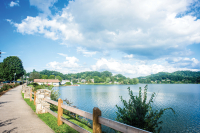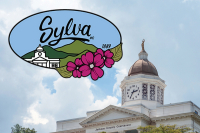McCullough makes 19th century Paris come alive
“At last I have come into a dreamland.” So wrote Harriet Beecher Stowe shortly after her arrival in Paris in June of 1853.
Stowe had gone to Paris for the same reasons Americans still visit the City of Light: a desire for adventure, a taste for art, an escape from the rigors or familiarity of life in the States — in Stowe‘s case, from her sudden unanticipated fame after the publication of Uncle Tom‘s Cabin.
Americans in Paris usually call to mind the cafes frequented by Hemingway and Fitzgerald, the seedy hotels of Henry Miller, the soldier-writers like James Jones and William Styron who headed for Paris following the Second World War. Today we think of student hostels, university “study abroad” programs, and a city which millions of Americans have visited in the last 50 years, all of them bringing their own hopes and desires for what they might find there.
Rarely, however, do we think of Paris as an American destination in the 19th century. We are aware of the impression left by Benjamin Franklin on the French, of the role the city played in the lives of Thomas Jefferson and John Adams. Until now, few of us would even have thought that there were Americans living in Paris between the era of the Founding Fathers and the time of the “Lost Generation” of the First World War.
In The Greater Journey: Americans in Paris (ISBN 978-1-4165-71176-6, $37.50), best-selling historian and biographer David McCullough corrects this perception by giving us a fascinating account of the lives of Americans in Paris between 1830 and 1900. Elizabeth Blackwell, America’s first female doctor, James Fenimore Cooper, Samuel Morse, Oliver Wendell Holmes, Ralph Waldo Emerson, Henry James: these and many other Americans visited Paris and felt, to varying degrees, its influence in their lives.
In The Greater Journey, McCullough examines both this influence and the way in which Americans interacted with one another in so strange and different a place. In his account of Morse and Cooper, for example, we are given not only insights into the world of art at this time — for years Morse worked slavishly to become a painter before helping bring the telegraph to the world — but McCullough also shows us the strong friendship between these two men. Cooper came to Paris a famous writer, while Morse was a struggling painter, yet for their time in the city they became the best of friends. Cooper became intrigued by his friend’s painting “Gallery of the Louvre,” an enormous work featuring a gallery filled with paintings and Cooper himself, and would visit Morse daily at his work to offer encouragement. Along with this account of the two men McCullough gives us their biographies in miniature, allowing us to see them more completely both as Americans and as travelers.
Related Items
Here are dozens of other portraits. We learn about the importance of Paris to the work of Augustus Saint-Gaudens; we discover Mary Putnam and her determination to pursue medical studies in spite of many obstacles; we watch George Caitlin, the painter of the Plains Indians, and the tribal members who came under his auspices to the city and were admired by King Louis-Philippe; we gain access to the studio of Mary Cassatt, one of the great American Impressionists of this era.
In addition to telling us a relatively unknown story of Americans overseas, McCullough also gives a fine account of Paris itself during these years: the revolutions in art and politics, the plagues, the renovation of the city, the war against the Germans in 1870, the awful siege that followed.
We learn more than a little about French politics and painting, Parisian cuisine (which included the eating of rats during the great siege), the medical and technological advances of the era, literature and poetry. We see how Americans often carried home what they had learned from the French and made it a part of their own work.
This 500-page book also includes many photographs of these Americans abroad and examples of their artwork. Readers will find these invaluable in terms of following McCullough’s discussion of them.
For John Singer Sargent, for example, we not only have examples here of his portraiture, but we have sketches of Sargent by a fellow art student, a photograph of the artist in his studio working on one of his most notorious works, “Madame X”, the work itself, and his action painting, “El Jaleo.”
Readers will find themselves time and again turning from the text to these pictures, grateful that McCullough and his publisher saw fit to include them as an important part of the story.
David McCullough, who has authored such fine histories as 1776 and The Great Bridge, and whose biographies — Truman, Mornings on Horseback, John Adams — have done so much to arouse the interest of Americans in their past, has again struck gold.
The Greater Journey offers us a wonderful opportunity to visit a hidden part of the American past and to come away from that visit feeling as if we have gained a treasure of information.
The Greater Journey: Americans in Paris by David McCullough. Simon & Schuster, 2011. 576 pages.









